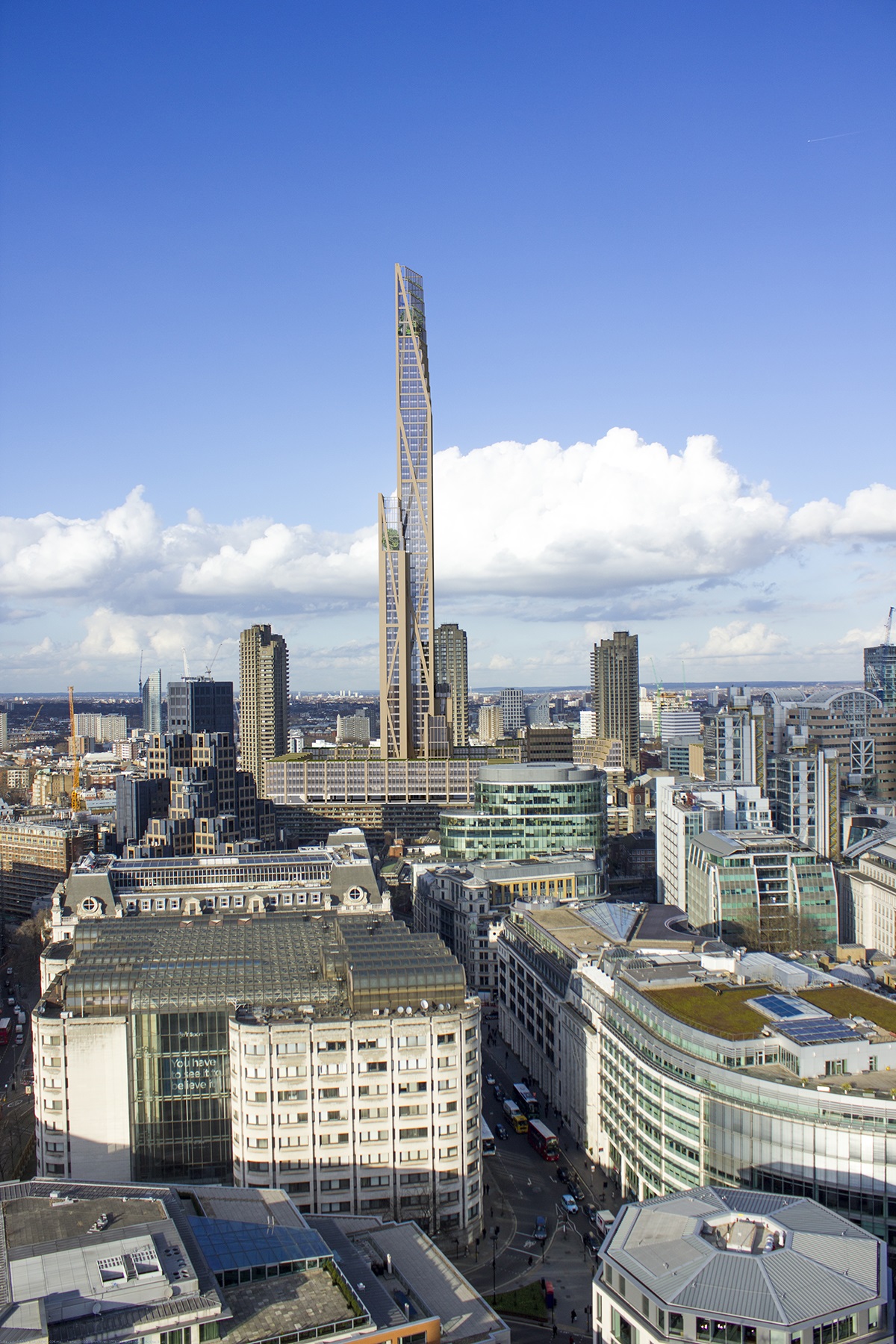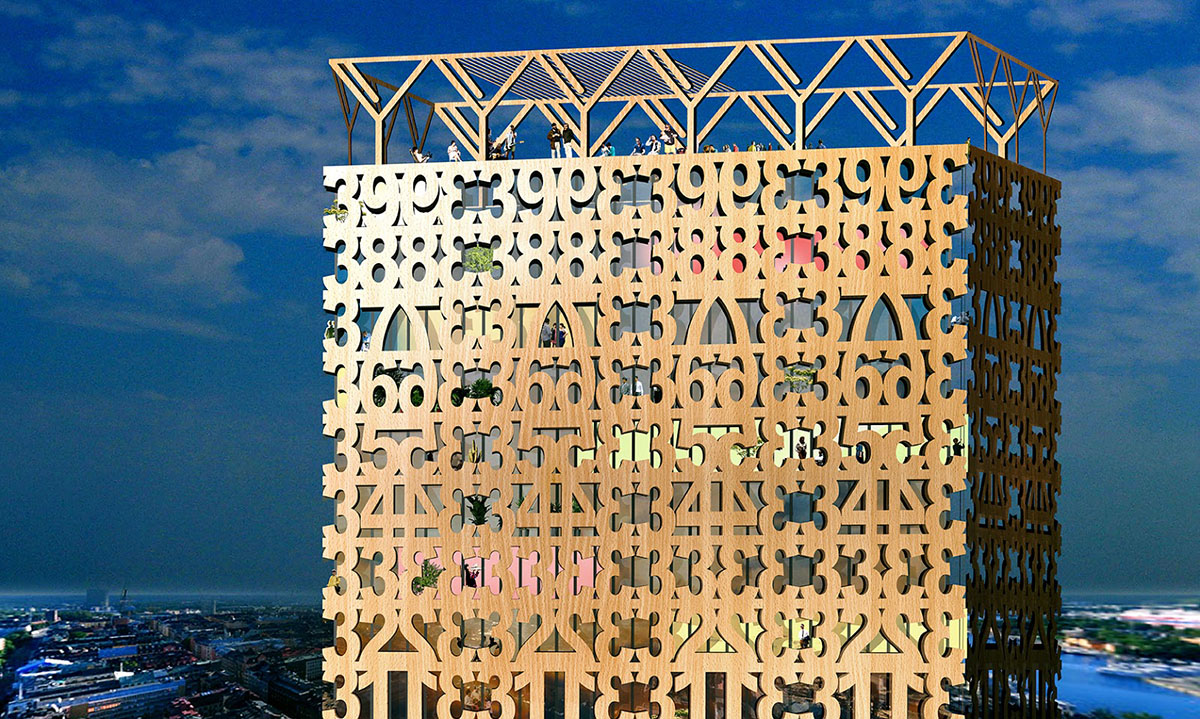Submitted by WA Contents
Researches show that glue makes plant cell walls strong and might be the future of Wooden Skyscrapers
United Kingdom Architecture News - Dec 23, 2016 - 10:20 17324 views

A group of research team, led a father and son team at the Universities of Warwick and Cambridge, showed that glue material could hold the key to wooden skyscrapers as it makes plant cell walls more strong and energy efficient.
The research was developed at the Universities of Warwick and Cambridge and published in the journal of Nature Communications two days ago. The research enlightened a long-standing mystery of how key sugars in cells bind to form strong, indigestible materials.
Large molecules or ‘polymers’ are the two most common elements found on Earth -named as cellulose and xylan, these two elements are found in the cell walls of materials such as wood and straw. They play a key role in determining the strength of materials and how easily they can be digested.

Michael Charters' Big Wood Skyscraper is a Sustainable Alternative to Steel and Concrete Buildings in 2013. Image courtesy of eVolo
According to the research, the scientists have known that these two polymers must somehow stick together to allow the formation of strong plant walls, but how this occurs has, until now, remained a mystery: xylan is a long, winding polymer with so-called ‘decorations’ of other sugars and molecules attached, so how could this adhere to the thick, rod-like cellulose molecules?
''We knew the answer must be elegant and simple,'' explains Professor Paul Dupree from the Department of Biochemistry at the University of Cambridge, who led the research.
''And in fact, it was. What we found was that cellulose induces xylan to untwist itself and straighten out, allowing it to attach itself to the cellulose molecule. It then acts as a kind of ‘glue’ that can protect cellulose or bind the molecules together, making very strong structures.''

Oakwood Tower Barbican view-London's first skyscraper with its surrounding. Image courtesy of PLP Architecture
To investigate this in more detail, the scientists used an imaging technique known as solid state nuclear magnetic resonance (ssNMR), which is based on the same physics as hospital MRI scanners, but can reveal structure at the nanoscale. However, while ssNMR can image carbon, it requires a particular heavy isotope of carbon, carbon-13. This meant that the team had to grow their plants in an atmosphere enriched with a special form of carbon dioxide – carbon-13 dioxide.
''By studying these molecules, which are over 10,000 times narrower than the width of a human hair, we could see for the first time how cellulose and xylan slot together and why this makes for such strong cell walls,'' said Professor Ray Dupree – Paul Dupree’s father, and a co-author on the paper – supervised the work at the University of Warwick’s ssNMR laboratory.

Anders Berensson Architects' 133-metre wooden skyscraper covered by numbers. Image courtesy of Anders Berensson Architects
Paul Dupree stated that ''understanding how cellulose and xylan fit together could have a dramatic effect on industries as diverse as biofuels, paper production and agriculture.''
''One of the biggest barriers to ‘digesting’ plants – whether that’s for use as biofuels or as animal feed, for example – has been breaking down the tough cellular walls,'' he says. ''Take paper production – enormous amounts of energy are required for this process. A better understanding of the relationship between cellulose and xylan could help us vastly reduce the amount of energy required for such processes.''

C.F. Møller Architects' 34-story wood-framed residential tower in Stockholm. Image courtesy of C.F. Møller Architects with DinellJohansson
There are already applications and studies on sustainable wooden skyscrapers -PLP Architecture's proposal in collaboration with researchers from Cambridge University’s Department of Architecture on designing London’s first timber skyscraper is just an example of how wood material is used and forces alternative innovations.
C.F. Møller Architects' 34-story wood-framed residential tower in the center of Stockholm was proposed in 2013. Anders Berensson Architects' 133-metre wooden skyscraper-will be the tales building of Stockholm is another striking design proposed this year.
Top image: Michael Charters' Big Wood Skyscraper is a Sustainable Alternative to Steel and Concrete Buildings in 2013. Image courtesy of eVolo
> via University of Cambridge
